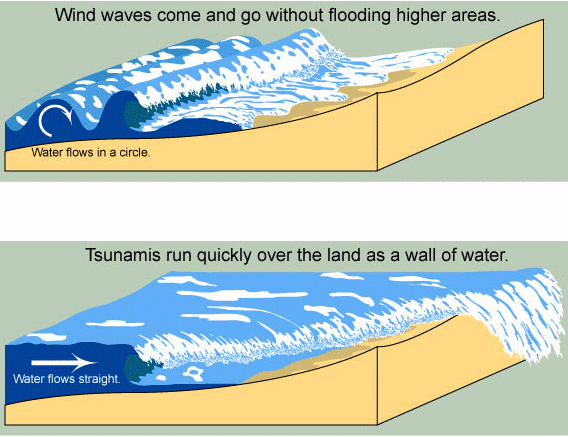 Most folks correctly presume that the Straits of Juan de Fuca would protect Vashon from the worst effects of a cross-Pacific, or Cascadia Earthquake induced tsunami. However, we still are likely to see some serious impacts from that (especially in Quartermaster Harbor) – but more likely from local sources of tsunamis and seiches within Puget Sound.
Most folks correctly presume that the Straits of Juan de Fuca would protect Vashon from the worst effects of a cross-Pacific, or Cascadia Earthquake induced tsunami. However, we still are likely to see some serious impacts from that (especially in Quartermaster Harbor) – but more likely from local sources of tsunamis and seiches within Puget Sound.
YouTube Video showing 1-3 meter inundation from a Cascadia event: https://www.youtube.com/watch?v=YhjsAjZQZeg & a closer view the inner Puget Sound showing up to a ~3+ meter impact to Quartermaster Harbor - some THREE hours after the initial quake! More recent videos are up at: https://www.dnr.wa.gov/programs-and-services/geology/geologic-hazards/tsunamis
Though not fully studied, there are a number of well researched reports that indicate the scale of what we might face.
http://www.pmel.noaa.gov/pubs/PDF/vent2981/vent2981.pdf (~8 MB)
has some Vashon specific information – which is presented here – even though taken out of context:
Seattle Fault Scenario
The southern wave front splits into two upon striking the northern tip of Vashon Island 4 min after initial deformation. The eastern and more intense front travels down East Passage striking northern Maury Island and Dumas Bay and then reflecting off the Ruston Way waterfront and southern Vashon Island 12 min after generation (Fig. 7). The weaker west front travels down Colvos Passage striking Point Defiance before joining with the stronger reflected wave in Dalco Pass. Maximum wave crests of approximately 3.5 m amplitudes reach Commencement Bay and Gig Harbor approximately 19 min after generation (Fig. 6). Part of the primary front’s reflected wave energy travels north into Quartermaster Harbor and back up East Passage toward Elliott Bay and northern Puget Sound. The remaining wave energy travels into The Narrows and then dissipates in southern Puget Sound. Smaller though still significant waves continue to reflect back and forth within the study region for 3 hr.
High (>1.5 m/s) wave velocities occur within Commencement Bay, Gig Harbor, East Passage, Quartermaster Harbor, The Narrows, and Wollochet Bay. Since the model does not dynamically include tidal currents, the current speeds may be more substantial if these events occurred during a flood tide.
- Pg 10
Tacoma Fault Scenario
Inundation occurs at both State ferry terminals approximately 18 min after tsunami generation. The Tahlequah terminal at the southern point of Vashon Island is hit with an initial 3.3-m wave with speeds ranging from 5–7 m/s and overtopping the dock and staging area. A 3.9-m wave strikes the Point Defiance terminal and marina at speeds of approximately 3 m/s
- Pg 12
Background Tsunami Information
NOTE: Also see this blog post for Vashon-specific tsunami information that has yet to be reflected on this page.